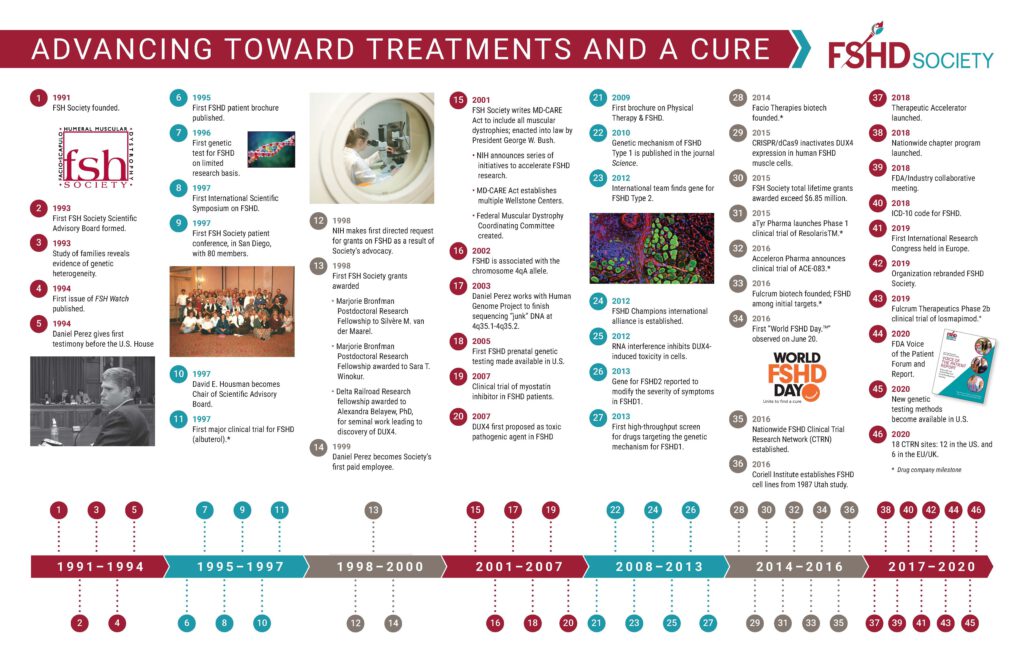Time flies when you have your nose to the grindstone, working with focus and determination on a lofty goal. It has been an amazing 30 years since Daniel Perez and Steve Jacobsen started the Society. Back then, almost no one was doing research on facioscapulohumeral muscular dystrophy (FSHD). The human genome had not yet been mapped. The internet was in its infancy. People diagnosed with FSHD went through life never meeting another soul with the same condition. Doctors told their patients to avoid exercise or, worse, to expect to not live beyond their 20s. Today, thanks to the work started by our pioneers, supported first by a handful and now by thousands of families, we are a worldwide community of more than 10,000 patients, families, friends and supporters, researchers and clinicians. We have identified the genetic mechanism causing FSHD and nearly a dozen companies are working on treatments.
Check out our 30th anniversary timeline, marking major milestones in our progress. While three decades is far too long a time for patients who need treatments now, this is a timely reminder that we have in fact come a great distance. A dream that once upon a time seemed unimaginable, is now almost within reach, with all of us pushing forward together.
Click on the image to expand.



Dear frieds,
In year 2007 we published our seminal work (Kowaljow et al., 2007) proposing that DUX4 is the causative pathogenic protein in FSHD. The original manuscript, submitted to Nature Medicine in 2003, was rejected (no review). In the same year (2003), Sara Winokur allowed me to present ALL our results at the FSHD IRC in LA (2003). Our studies were entirely performed in my laboratory in Cordoba (Argentina). Our results showed, for the firs time, that DUX4 was a toxic protein. At that time, most of the community was looking in another directions to explain the pathogenesis in FSHD. In addition, no lab had been able to find any connection between DUX4 and FSHD. In year 2003, considering the difficulties to publish our results, I proposed to A. Belayew to collaborate to publish together those findings showing that DUX4 is toxic and could underlie the pathogenesis of FSHD. Our paper, however, took 4 more years (four!) to ble published (Kowljow et al., 2007)… In any case, our pioneer contribution triggered most of the following research in the field of DUX4 and, together with the Science paper in 2010, conducted to the tremendous advances in the current FSHD therapies. I strongly suggest that our contribution (2007′ Dr Rosa’s lab paper) must be included in your timeline.
Thanks so much and best regards,
Alberto L. Rosa (alrosa@ucc.edu.ar)
Thanks for alerting us to this oversight. We’ve now updated the diagram.
Sir when will fshd be cured
Thank you to Alberto and Alexandra and all their colleagues for putting DUX4 on the map. This bold and dogged pursuit indeed deserves recognition. Thanks June for amending the timeline.
Scott Harper, Columbus, Ohio
It’s really happy to see the progress and appreciate the efforts. Is there any study going on in India as a part of this?